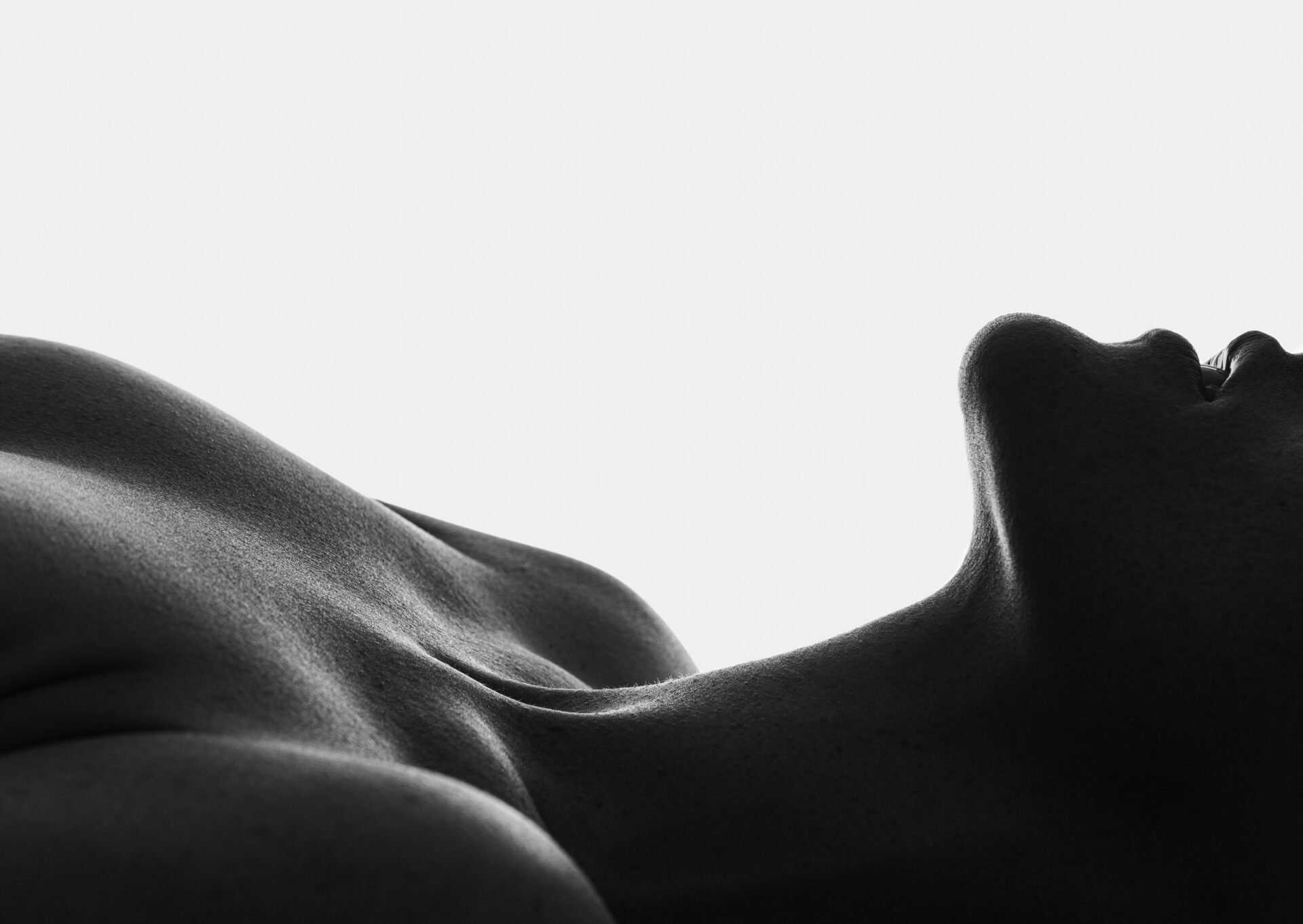”
Written byChristian Staines
“In the contemporary age of unhealthy media & the consequential insecurities thereof, ‘Born Bare’ serves as a humble voice urging for the angst around one’s body to be replaced with reverence & awe.”
Born Bare urges us to re-evaluate our perceptions of the raw human form; moving from a place of unease towards celebration. We are confronted by the stigma that surrounds certain aspects of our anatomy – nudity, scars, hair, stretch marks – and how we should be admiring the organic beauty present in each of these imperfections rather than shaming them. It is the second fine art collection from Cape Town photographer Rudi Gremels, and is so much more than just a selection of nude bodies.
Before we delve deeper into what Rudi’s intentions were with this collection, let’s first establish a bit of his creative background.
In May of last year, I offhandedly decided to go to an art exhibition in Noordhoek. I just planned on having a few drinks and looking at some cool photos, but instead I was completely blown away by the quality of work that encircled the room. Rudi had set off on a global adventure about seven years ago and 30,000 photos later he was finally exhibiting his work to the world. I immediately set up an interview with Rudi for the following week and was forever changed by what he told me about fine art photography. If you’d like to read more about Rudi’s travels and his first collection, then click here for our previous article – ‘Beyond the Borders’.
What’s important to note is that Rudi began his artistic journey capturing the majesty of the natural world, and that it was only when covid struck that he began focusing more on the human form. When he first showed me the images from Born Bare, I immediately noticed two things: the human body holds more amazing grooves and curves than we realise, and that these patterns often mirror the arrangements we see in the world around us.
“Stemming from my background in women-empowerment photography, as well as my desire to continuously push my creative boundaries, this collection is my first creative expression in the territory where nudity & fine art overlap.”
It’s no mistake that each photograph has a title capturing its respective natural phenomenon. The most noticeable of all being the aptly named ‘Sahara’ (bottom left)) and its counterpart ‘Desert Wave’ (bottom right). ‘Sahara’ captures the moment of deep inhalation on a man’s chest and stomach, which beautifully mimics the windswept dunes of Morocco from Rudi’s first collection. With this comparison in mind, it would be worthwhile to re-examine each of his photographs with a new lens (so to speak). View the full collection here.
Compared to travel photography, nude photography carries with it the potential for social and political commentary and consequence. No one is going to criticize your intentionality behind a photo of a mountain range, but they might when it comes to a fully exposed human body. When you get into nude photography in this day and age, you activate a certain narrative surrounding nudity. To this, Rudi makes one thing clear:
“I am not trying to express any opinion about gender, race or culture, but am more so just trying to celebrate the human form. And that celebration goes across all genders and races. I’m talking towards the trauma that we carry around our bodies, whether we identify as male, female or otherwise, we all carry some sort of shame – to a lesser or greater extent.”
“We are all born bare, and this, our most natural form, is ironically the most shaming aspect of our lives.”
These photographs were captured in Rudi’s home studio using a hand-held Sony A7R III and a single light source. This combination of techniques allowed him to enter the personal sphere surrounding each model and capture each unique dimple, scar and hair they carry. There were no stylists or lighting assistants, just Rudi and the model. Nothing to break the flow of the shoot nor disturb the vulnerability of each pose.
“The most important part of this shoot was being able to hold the space for vulnerability. That’s something that would otherwise be lost if I was constantly fiddling with lighting and lenses or tripods. I think that art is energy and that when you lose it in the real time of the shoot… it’s gone. That’s what’s important. No one cares whether it was taken on a tripod, or with a Sony or a Canon with whatever lighting. You just want to answer one question: What is the content of the photo communicating to the viewer?”
“Making these shoots as natural, comfortable, and positive as possible is what I owed these models. I did my best and sincerely hope that the efforts paid off.”
If you’d like to read more about the motifs behind this collection, Rudi explains certain artistic elements he considered during this conception of this bodily celebration. Topics such as the male/female juxtaposition, the deconstruction of a sexualising gaze, and how a step like this might end a photographer’s career. Click here to read Rudi’s own perceptions on Born Bare.
—
In the coming weeks, Rudi plans on exhibiting this collection at an artistic space in Cape Town, so keep an eye on our socials for where that might be! After that, Rudi hopes to begin work on his next photographic journey; whether it’s travel photography or tasteful nude art, we can’t wait for more.
View Rudi’s website here:
Or check out his Instagram here:
For more of our Visceral features, click here.





